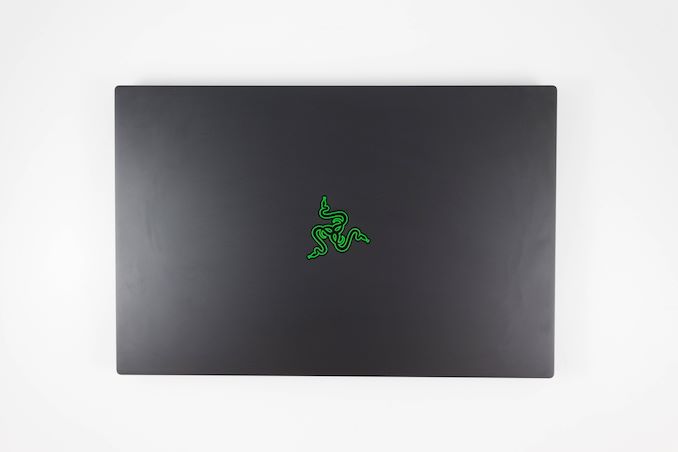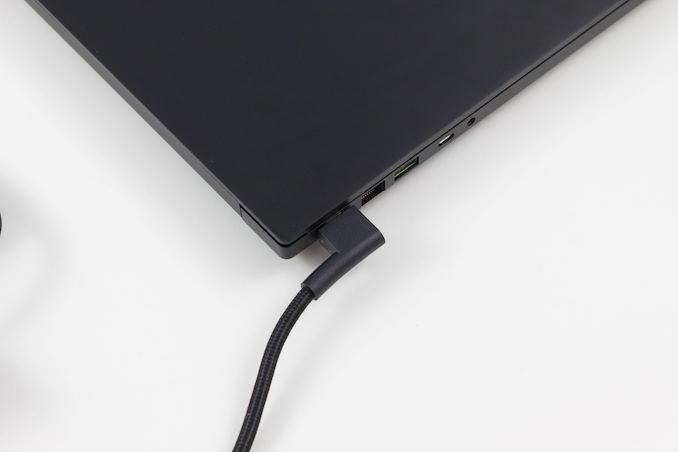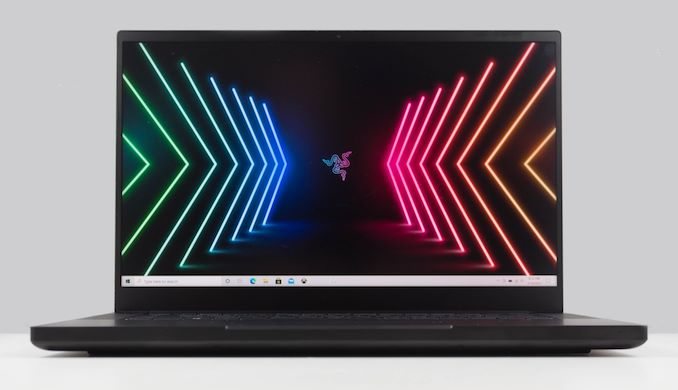The Razer Blade 15 (2021) Review: Amped Up With Ampere
by Brett Howse on March 11, 2021 9:30 AM EST- Posted in
- Laptops
- Gaming
- Razer
- Razer Blade
- Ampere
Final Thoughts
It has been a few generations since we’ve taken a look at a Razer Blade, and what once started as a single notebook for the peripheral company has become an entire lineup of devices, hitting various performance levels and price points, while all offering a unified vision and design.
The Razer Blade 15 is the successor to the original Razer Blade, which was a 14-inch notebook. As part of the move to thinner display bezels, Razer redesigned it to fit a 15-inch display in a chassis that was about the same size, and the new design feels fresh and modern. It does not lose its heritage though, and picking up the Razer Blade 15 brought back immediate memories of the original Razer Blade. The company has tweaked the design, but through and through, this is clearly a Razer laptop.
As with any market, there are various price levels, and with premium offerings you expect a refined experience, something where Razer definitely delivers. Although the fundamental look and feel of the Razer Blade 15 is not much different than the original Razer Blade, it is still a well-built, beautiful design, that seems like it is ageless. Razer’s CNC milled aluminum body is strong, feels great in the hand, and the green touches such as the backlit Razer logo on the lid all work well together. Razer occasionally offers choices other than the black anodized finish, and while that is not the case at the moment, hopefully they will offer some additional finishes in the future. The black looks great, but it is a real chore to keep clean.
A premium gaming laptop must also offer high-performance components under the hood, and Razer delivers here as well. Although Intel’s Comet Lake platform is definitely showing its age, the hex-core processor still delivers good performance. Intel has not yet released the 45-Watt Tiger Lake products, so for now, the 10th generation Intel Core is what is available. For gaming, the GPU is the primary focus, and Razer offers the entire range of RTX 30-Series laptop GPUs with the Razer Blade 15, with RTX 3060, 3070, and 3080 options. The RTX 3070 in the review unit was able to roughly match the (laptop) RTX 2080 from last year, with less power draw, and a cheaper price. And it's a good fit for the QHD display.
Razer’s display choices are vast as well, with high-refresh IPS models, as well as a UHD OLED option. The QHD model in the review unit offers P3 D65 gamut support, as well as a 165 Hz maximum refresh rate; and while the gamut is not ideal, Razer’s included ICC profile did do a reasonable job with accuracy in the wider gamut. It is hard to harp on companies that are trying to offer wide-gamut support, but Windows 10 just handles them very poorly, which is a real shame. Razer also only offers G-SYNC support (which is also required for Advanced Optimus) on just a single display panel. That is a shame, as G-SYNC is a great feature on any gaming notebook.
If the Razer Blade had a weakness, it would be battery life. Despite the laptop supporting NVIDIA Optimus, which allows the dGPU to be powered down when unneeded, the relatively small battery only provided about five hours of battery life. Several years ago, five hours out of a gaming system would be amazing, but it is definitely not enough to use this untethered for any significant amount of time. Most gaming laptops are still designed to be plugged in for the majority of their usage, and despite the Blade 15 being a relatively thin and light design, it still falls into that camp.
There is a lot to like with the Razer Blade, and there really always has been. It is still one of the nicest Windows laptops around, offering plenty of performance in a sleek and elegant design. Some gaming notebooks are very heavily styled, but Razer has always been much more subtle with the touches, and other than the Razer green logo and USB ports, the Blade 15 is very understated.
None of the Razer Blade 15 models are inexpensive, with the most basic model starting at $1700. There are far less expensive gaming notebooks, especially the Clevo rebrands, which may offer more performance per dollar. But as with any premium device, the other components are where the Razer Blade shines. The build. The styling. The looks. The Razer Blade 15 offers all of that, plus the performance of a RTX 30-Series. Who could ask for more?













44 Comments
View All Comments
Ewout - Sunday, March 14, 2021 - link
Ah okay thanks, you think this screen is good enough for photo editing? Just looking for reviews before buying one.Brett Howse - Sunday, March 14, 2021 - link
If your primary goal was editing, then maybe not. If you want to do that as well as gaming, it would be a decent option. The color accuracy is pretty good out of the box, and could be tightened up a bit more with a better ICC profile. You'd need to ensure your photo editing application supported the P3 D65 gamut as well, or everything you edit will be the wrong color if it is assuming sRGB.ghesatcafe - Wednesday, March 17, 2021 - link
Extremely high quality articles from the desired content to the image in the future you can continue to share. Thank you for sharing with everyone, honoring you.MetaCube - Thursday, March 18, 2021 - link
Still using Skylake cores in a 1.7k+ laptop in 2021...